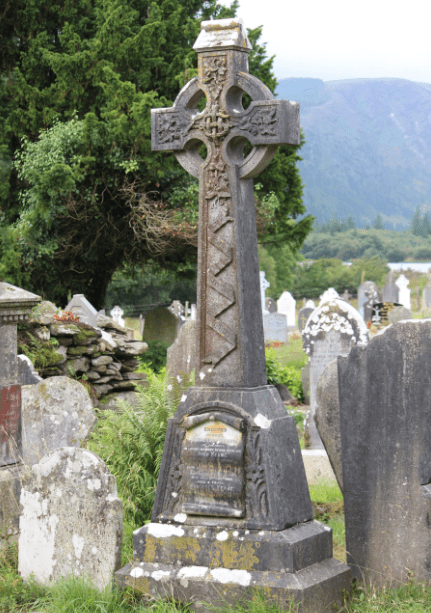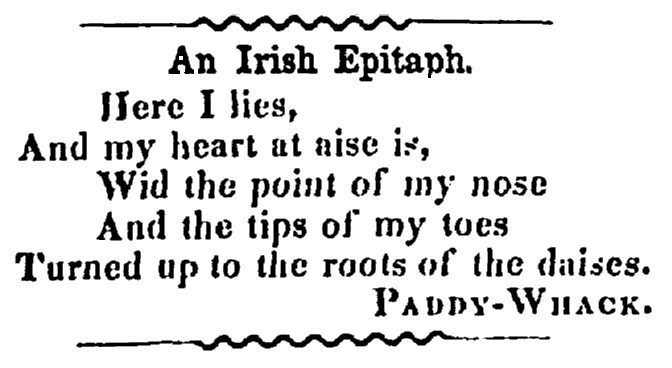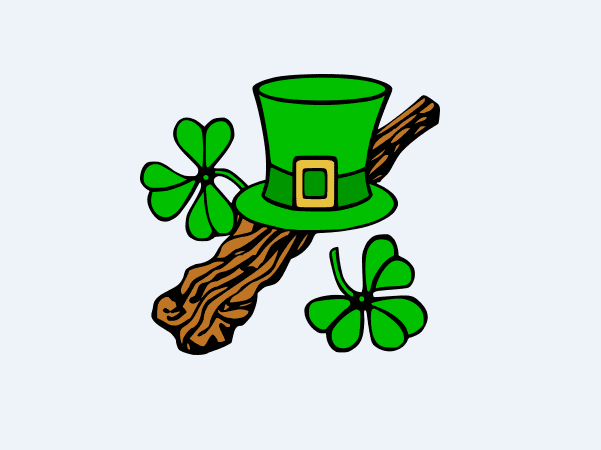Introduction: In this article – in honor of the upcoming St. Patrick’s Day celebrations – Mary Harrell-Sesniak searches old newspapers to find examples of Irish epitaphs. Mary is a genealogist, author and editor with a strong technology background.
Out of curiosity, I decided to research Irish headstones for St. Patrick’s Day.

At GenealogyBank, you’ll find many Irish epitaphs published in the site’s Historical Newspaper Archives and, especially, in the Irish American Newspaper Archives.
With a Heart “at Ease”
As the example below, we found a number of humorous epitaphs reflecting a certain sense of Irish humor.

Message from a Wife
I am sure we can all relate to this tombstone quote from Patrick O’Neil’s wife. She thought cruel death was unkind for leaving her behind after her husband’s death. It would have been better for her if they had gone at the same time.
Neglected His Own Business
Some headstones point out the somewhat less desirable characteristics of the deceased. Robert Jackson was an eccentric character. He’d talk in all company, walk in all weather. He was fond of his pipe, his glass and his daughter. Unfortunately, he minded everyone’s business but neglected his own – at least, according to his epitaph written by his nephew John Jackson.
Parents Lost at Sea
John Higley’s parents met unfortunate fates by drowning at sea on a passage from America to Ireland. Their passing is strangely remembered in their son’s tombstone. His Irish headstone quotes, “Here lies John Higley, whose father and mother were drowned in their passage from America. Had they both lived, they would have been buried here”. This Irish epitaph was able to provide information not only about John Higley, but also on his parents as well.
Brief Rhyme
Potentially a little Irish humor in this tombstone for John Mound, who was also lost at sea, was memorialized with a very brief rhyme.
Beware of Drinking
The fiddler Denis McCabe fell out of St. Patrick’s Barge in 1770, apparently drunk. His Irish tombstone holds a special warning to other fiddlers who might also attempt to perform on a boat after drinking.
The Kingdom of Heaven
Lady O’Looney, who was related to several famous people, was remembered in her epitaph as bland, passionate, religious, and as a writer and watercolor painter.
Irish Hero
Irish hero Robert Emmet (1778-1809) has a famous Irish epitaph (or lack thereof). After rebelling against British rule in 1803, he was caught, tried for high treason and executed. His request for his epitaph has been republished in newspapers from the early 1800s to recent times:
When my country takes her rank among the nations of the earth, then and not till then let my epitaph be written. – Oh! Erin Oh!
Soldier in the Gaelic Ranks
I leave you with one final Irish epitaph, one written for Tadhg MacConmara. A supporter of the Gaelic League, Tadhg’s obituary says of him:
The little school-house in Crusheen where so many of the young people of the parish learned to converse in and to read the language of their sires held no heart nearly as true as Tadhg’s. Faithful as the needle to the pole, he never wavered in his studies or in his belief that Erin would yet be what she was of yore.
His obituary ends with his Gaelic epitaph.
Related Irish American Genealogy Articles:
